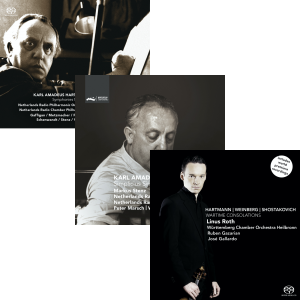Februar 1, 2017, 20.00 Uhr, KAHG
Breakout Ensemble, #Listen#Out
Works by Mauricio Kagel, Katharina S. Müller, Hans-Henning Ginzel, Jacopo Salvatori and Samuel Penderbayne Katharina S. Müller (violin), Hans-Henning Ginzel (violoncello) and Jacopo Salvatori (piano)
—
May 3, 2017, 20.00 Uhr, KAHG
„Podium junger Komponisten“, Lieder in der Fremde [“Podium of Young Composers”, Songs in Foreign Lands]
Concert and discussion with Caio de Azevedo, Alexander Mathewson, Claas Krause, Henning Ginzel, Tom Smith, Hao Wu and young performers; selection and supervision during the rehearsal process by Moritz Eggert (cooperation with the Munich University of Music and Drama) and Andreas Hérm Baumgartner (conductor, artistic director, discussion leader)
—
May 16, 2017 (Exhibition until 18 October 2017), 20.00 Uhr, KAHG
Alexander Lonquich – Grenzgänge [“Crossing borders”]: Karl Amadeus Hartmann and Robert Schumann
Concert with graphics by Alfred Hrdlicka
Concert, talk, exhibition, lecture; with Alexander Lonquich (piano) and Andreas Hérm Baumgartner (moderator)
—
October 18, 2017, 20.00 Uhr, KAHG
Thomas Zehetmair and Ruth Killius
Concert with discussion; Thomas Zehetmair (violin), Ruth Killius (viola) and Andreas Hérm Baumgartner (moderator)
Works by Karl Amadeus Hartmann, Nikos Skalkottas, Bohuslav Martinů, Heinz Holliger and Giacinto Scelsi.
—
November 17, 2017, 20.00 Uhr, KAHG
“Podium of Young Composers”, Part II
